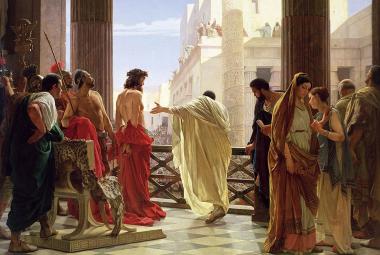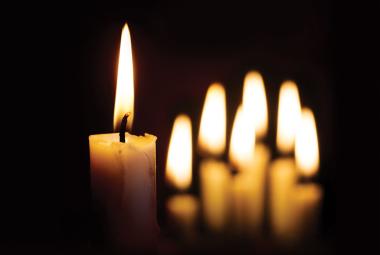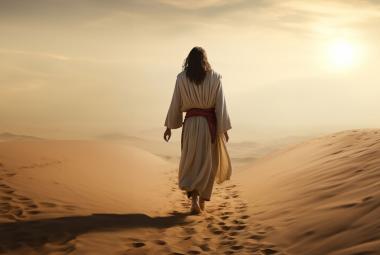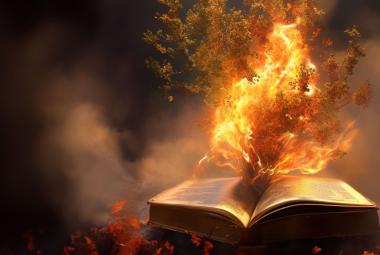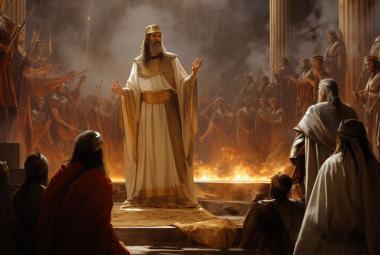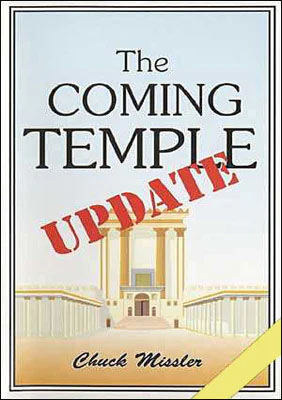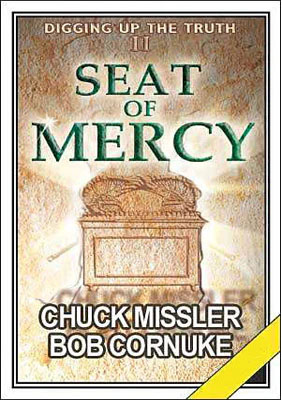On August 14th, our Jewish friends will observe Tisha B'Av ("The Ninth Day of Av"). This is a special day of mourning, since on this day four tragedies occurred:
- On this day the First Temple, built by Solomon, was destroyed by Nebuchadnezzar, and the Babylonian captivity began;
- On this day the Second Temple, the one expanded by Herod and the one which was standing during Christ’s ministry, was destroyed by the Romans in 70 A.D., precisely as Jesus predicted (Luke 19:43, 44);
- On this day Betar, the last fortress to hold out against the Romans in the Bar Kochba revolt, fell in 135 A.D.; and,
- Jewish tradition also regards this date as the date the Children of Israel were prohibited from entering the Promised Land (Num 14:34).
It is a strange coincidence of history that both Nebuchadnezzar in his day and the Romans in theirs destroyed the respective temples on the same date on the Jewish calendar. And, as the rabbis remind us, "Coincidence is not a kosher word." There are no "coincidences" in God’s kingdom.
Joy in Mourning?
Tisha B'Av is, thus, a day of intensive mourning for the destruction of the Temple and for Jerusalem. But coexisting with this sense of grief is a subtle sense of joy. The day is to include joy for the future restoration of the Temple and the coming of the Messiah.
The Sabbath before Tisha B'Av is called Shabbat Hazon, the Sabbath of Vision, because of the Scripture portion for that day:
For the vision is yet for an appointed time, but at the end it shall speak, and not lie: though it tarry, wait for it; because it will surely come, it will not tarry. Habakkuk 2:3
The ultimate focus of this special observance is, of course, the anticipation of the rebuilding of the Temple. Recitals include:
Tonight marks 1,935 years since the destruction of the Second Temple and as yet redemption has not come. Know ye that whoever has not been privileged to witness the building of the Temple, is regarded as having witnessed the destruction within his own lifetime.1
Following this, a solitary candle is lit and the recitation of the Book of Lamentations is begun.
Yet, despite the solemnity of the fast, a subtle sense of joy is in the proceedings due to the anticipation of the ultimate rebuilding of the Temple.
Prophetic Scenario
One of the most exciting events on our prophetic horizon these days is, of course, the fact that the preparations have begun.
The Temple Institute in Jerusalem has fabricated most of the implements to serve in the temple. One can visit and view the headdress and breastplate (with the 12 precious stones) of the high priest. Special looms are weaving the linen for the priestly vestments. Scientists are scanning the world for the correct marine snails to yield the Levitical blue and royal purple dyes for the garments. Several hundred young men are training in the Yeshivas (special schools) to serve as priests. (All of them, of course, have Levi genes!)
Precise Location?
Despite the traditional view that the Muslim Dome of the Rock sits on the site, recent scholarship has cast doubts on this view.
Dr. Asher Kaufman’s research has suggested that the Temples actually stood 100 meters to the north. His publications caused quite a stir among the Christian community since that would place the Muslim structure in the "outer court" as suggested from Rev 11:1-2.
Tuvia Sagiv’s more recent research has indicated that the Temple more likely stood 100 meters to the south - between the Dome of the Rock and Al Aksa Mosque. Recent infrared studies seem to imply that Tuvia is correct.2 This would also place the Muslim structures in "the outer court."
These developments are of intense interest to prophecy students. Jesus, John, and Paul all make reference to a rebuilt Temple as standing prior to the Second Coming of Christ.3 It is going to be a major subject of interest in the coming few years as all this comes to a head.
It is, indeed, time to learn what the Bible has to say about these things. We are being plunged into a period of time about which the Bible has more to say than any other period of history - including the time that Jesus walked the shores of Galilee or climbed the mountains of Judea.
Stay tuned. It’s all coming, just like God said it would. He means what He says and says what He means. Let’s all do our homework. Are you really ready for all this? Pray about it.
Notes:
- Otzar Yisrael, Vol X page 319.
- See our briefing package, The Coming Temple: Update
- Matthew 24:15; Revelation 11:1-2; 2 Thessalonians 2:4, et al.
Sources:
Missler, Chuck, The Seat of Mercy, The Coming Temple: Update, Strategic Trends, Koinonia House.
Chill, Abraham, The Minhagim, Sepher-Hermon Press, New York, 1979. The customs and ceremonies of Judaism, their origins and rationale.

